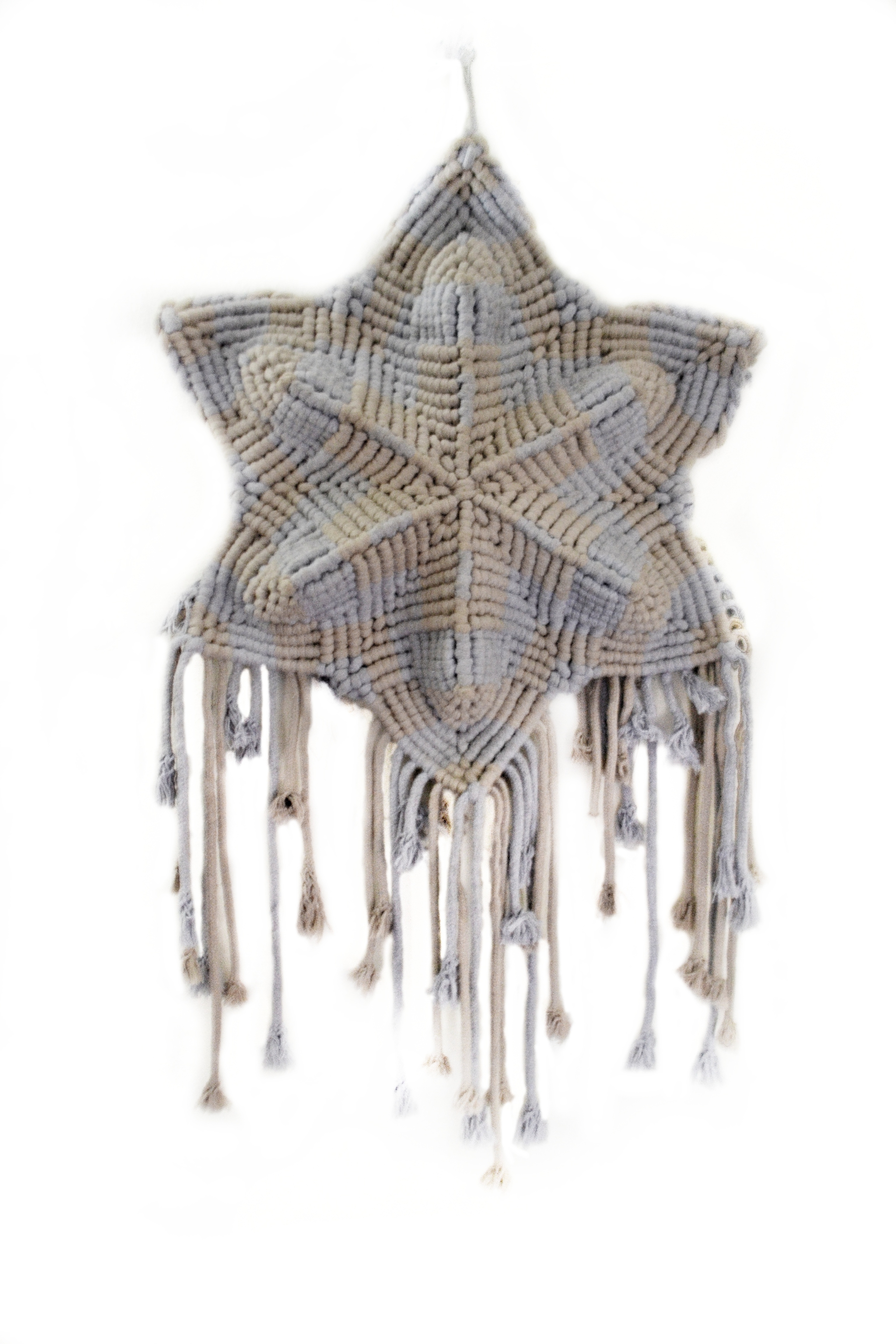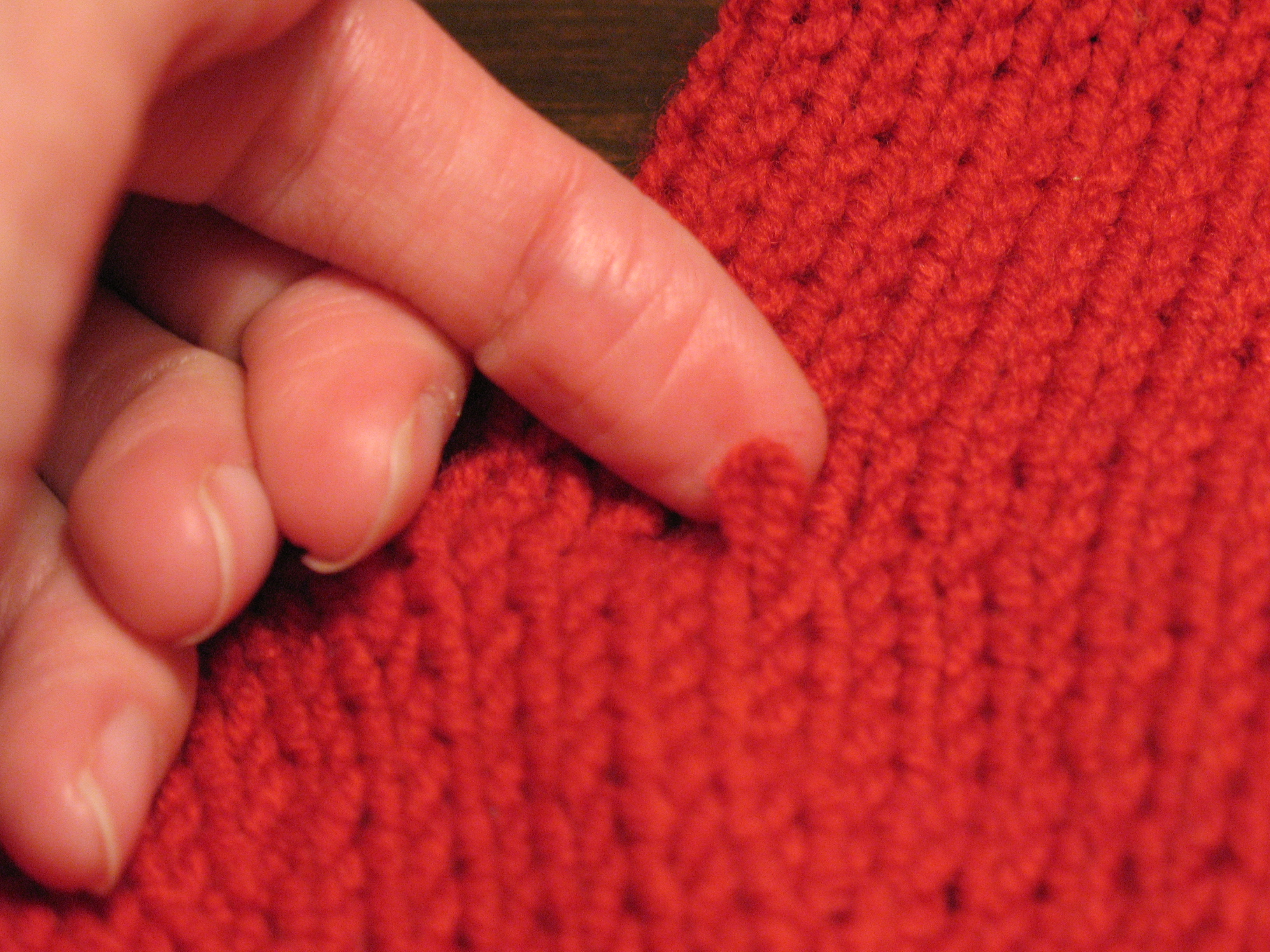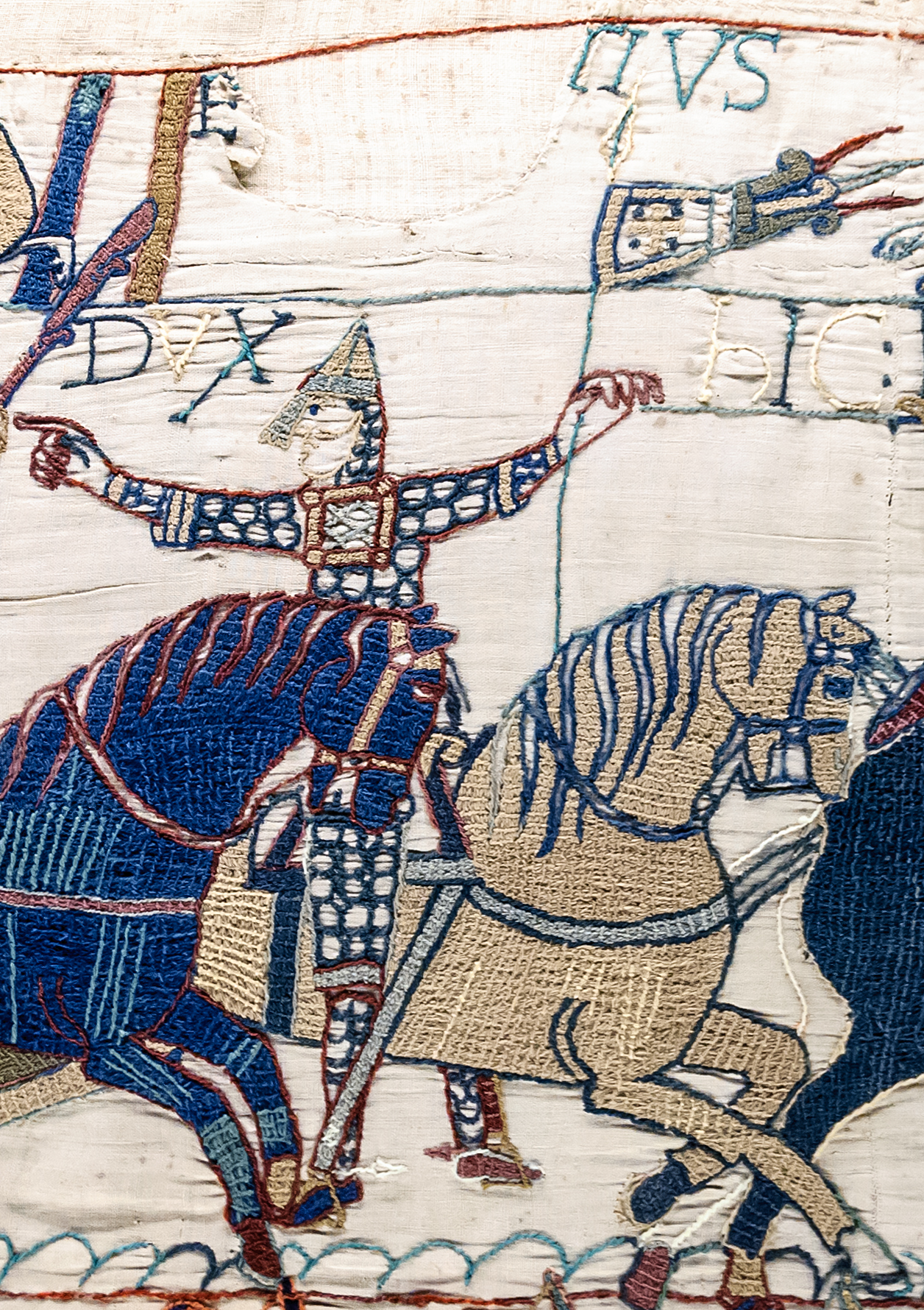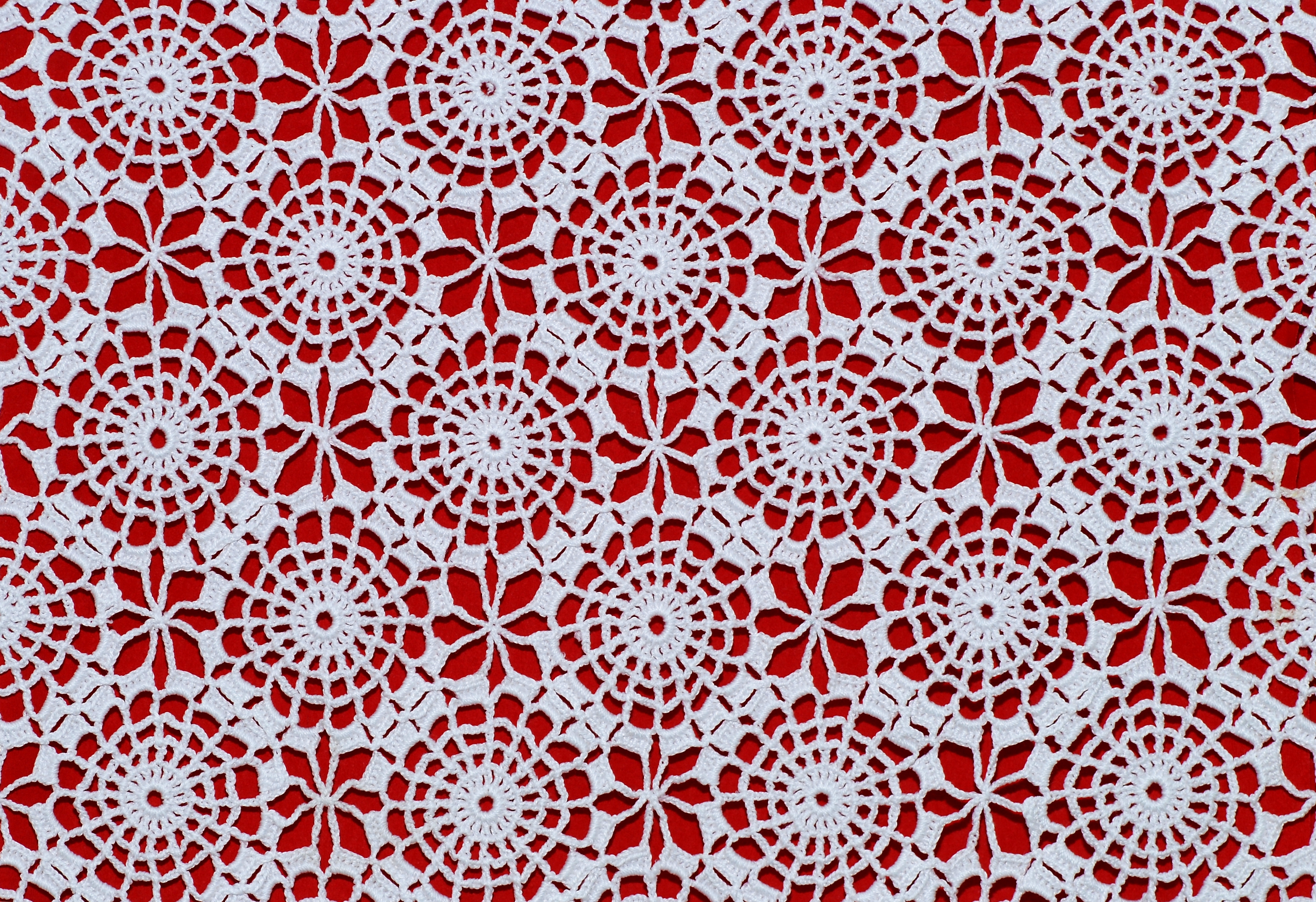|
Needlecraft
Needlework refers to decorative sewing and other textile handicrafts that involve the use of a needle. Needlework may also include related textile crafts like crochet (which uses a hook), or tatting, (which uses a shuttle). Similar abilities often transfer well between different varieties of needlework, such as fine motor skill and knowledge of textile fibers. Some of the same tools may be used in several different varieties of needlework. Background Needlework was an important fact of women's identity during the Victorian age, including embroidery, netting, knitting, crochet, and Berlin wool work. A growing middle class had more leisure time than ever before; printed materials offered homemakers thousands of patterns. Women were still limited to roles in the household, and under the standards of the time a woman working on needle work while entertaining the parlor was considered beautiful. According to one publication from 1843: "Never is beauty and feminine grace so att ... [...More Info...] [...Related Items...] OR: [Wikipedia] [Google] [Baidu] |
Needlepoint
Needlepoint is a type of canvas work, a form of embroidery in which yarn is stitched through a stiff open weave canvas. Traditionally needlepoint designs completely cover the canvas. Although needlepoint may be worked in a variety of stitches, many needlepoint designs use only a simple tent stitch and rely upon color changes in the yarn to construct the pattern. Needlepoint is the oldest form of canvas work. The degree of detail in needlepoint depends on the thread count of the underlying mesh fabric. Due to the inherent lack of suppleness of needlepoint, common uses include eyeglass cases, holiday ornaments, pillows, purses, upholstery, and wall hangings. History The roots of needlepoint go back thousands of years to the ancient Egyptians, who used small slanted stitches to sew up their canvas tents. Howard Carter, of Tutankhamen fame, found some needlepoint in the cave of a Pharaoh who had lived around 1500 BC. Modern needlepoint descends from the canvas work in tent s ... [...More Info...] [...Related Items...] OR: [Wikipedia] [Google] [Baidu] |
Appliqué
Appliqué is ornamental needlework in which pieces or patches of fabric in different shapes and patterns are sewn or stuck onto a larger piece to form a picture or pattern. It is commonly used as decoration, especially on garments. The technique is accomplished either by hand stitching or machine. Appliqué is commonly practised with textiles, but the term may be applied to similar techniques used on different materials. In the context of ceramics, for example, an appliqué is a separate piece of clay added to the primary work, generally for the purpose of decoration. The term originates from the Latin ''applicō'' "I apply" and subsequently from the French language, French ''appliquer'' "attach". History The term appliqué is derived from French and Latin verbs ''appliquer'' and ''applicare'', respectively, which both mean to join or attach. Like embroidery, it has a humble beginning. The technique was used as a way to strengthen worn areas of items or to patch holes that had ... [...More Info...] [...Related Items...] OR: [Wikipedia] [Google] [Baidu] |
Sewing
Sewing is the craft of fastening pieces of textiles together using a sewing needle and thread. Sewing is one of the oldest of the textile arts, arising in the Paleolithic era. Before the invention of spinning yarn or weaving fabric, archaeologists believe Stone Age people across Europe and Asia sewed fur and leather clothing using bone, antler or ivory sewing-needles and "thread" made of various animal body parts including sinew, catgut, and veins. For thousands of years, all sewing was done by hand. The invention of the sewing machine in the 19th century and the rise of computerization in the 20th century led to mass production and export of sewn objects, but hand sewing is still practiced around the world. Fine hand sewing is a characteristic of high-quality tailoring, haute couture fashion, and custom dressmaking, and is pursued by both textile artists and hobbyists as a means of creative expression. The first known use of the word "sewing" was in the 14th century. ... [...More Info...] [...Related Items...] OR: [Wikipedia] [Google] [Baidu] |
Quilting
Quilting is the process of joining a minimum of three layers of textile, fabric together either through stitching manually using a Sewing needle, needle and yarn, thread, or mechanically with a sewing machine or specialised longarm quilting system. An array of stitches is passed through all layers of the fabric to create a three-dimensional padded surface. The three layers are typically referred to as the top fabric or quilt top, Batting (material), batting or insulating material, and the backing. Quilting varies from a purely functional fabric joinery technique to highly elaborate, decorative three dimensional surface treatments. A wide variety of textile products are traditionally associated with quilting, including bed coverings, home furnishings, garments and costumes, wall hangings, Quilt art, artistic objects, and cultural artifacts. A quilter can employ a wide range of effects that contribute to the quality and utility of the final quilted material. To create these ef ... [...More Info...] [...Related Items...] OR: [Wikipedia] [Google] [Baidu] |
Macramé
Macramé is a form of textile produced using knotting (rather than weaving or knitting) techniques. The primary knots of macramé are the square (or reef knot) and forms of "hitching": various combinations of half hitches. It was long crafted by sailors, especially in elaborate or ornamental knotting forms, to cover anything from knife handles to bottles to parts of ships. Cavandoli macramé is one variety that is used to form geometric and free-form patterns like weaving. The Cavandoli style is done mainly in a single knot, the double half-hitch knot. Reverse half hitches are sometimes used to maintain balance when working the left and right halves of a balanced piece. Leather or fabric belts are another accessory often created via macramé techniques. Most friendship bracelets exchanged among schoolchildren and teens are created using this method. Vendors at theme parks, malls, seasonal fairs, and other public places may sell macramé jewelry or decoration as well. History ... [...More Info...] [...Related Items...] OR: [Wikipedia] [Google] [Baidu] |
Lucet
A lucet is a tool used in cordmaking or braiding which is believed to date back to the Viking and Medieval periods, when it was used to create cords that were used on clothing, or to hang items from the belt. Lucet cord is square, strong, and slightly springy. It closely resembles knitted I-cord or the cord produced on a knitting spool. Lucet may unravel if cut, but is easily fixed with a small knot. Unlike other braiding techniques such as , finger-loop braiding or plaiting, where the threads are of a finite length, lucetted (or knitted) braids can be created without pre-measuring threads and so it is a technique suited for very long cords. Origins of the lucet The supposed Medieval lucets appear to be double-pronged hollow bones, left tubular, presumably so that the cord could be drawn through the centre hole. In contrast, a modern lucet fork is lyre-shaped, normally made of wood, with two prongs at one end and (optionally) a handle on the other. It may also have a hole th ... [...More Info...] [...Related Items...] OR: [Wikipedia] [Google] [Baidu] |
Needle Lace
Needle lace is a type of lace created using a needle and thread to create hundreds of small stitches to form the lace itself. Origins The origins of needle lace date back to the 15th century and embroidery. Cutwork and drawn work were developed to add interest to white on white embroidery, and the methods used in these techniques led to needle lace. A second expert puts the development of needle lace in the following century, the 16th, in Italy, also stemming from embroidery, the openwork on linen technique called '' reticella''. To show off their wealth in that period in Italy, the aristocracy favored wearing rich cloth embellished by embroidery and braid. As the century progressed, the small areas that were cut from the fabric to highlight the needle lace were replaced by much larger areas of cutwork. The needlework was dependent on remaining threads running vertically and horizontally, leaving squares and rectangles, which led to geometric designs. Venice was a cente ... [...More Info...] [...Related Items...] OR: [Wikipedia] [Google] [Baidu] |
Lace-making
Lace is a delicate fabric made of yarn or thread in an open weblike pattern, made by machine or by hand. Generally, lace is split into two main categories, needlelace and bobbin lace, although there are other types of lace, such as knitted or crocheted lace. Other laces such as these are considered as a category of their specific craft. Knitted lace, therefore, is an example of knitting. This article considers both needle lace and bobbin lace. While some experts say both needle lace and bobbin lace began in Italy in the late 1500s, there are some questions regarding its origins. Originally linen, silk, gold, or silver threads were used. Now lace is often made with cotton thread, although linen and silk threads are still available. Manufactured lace may be made of synthetic fiber. A few modern artists make lace with a fine copper or silver wire instead of thread. Etymology The word lace is from Middle English, from Old French ''las'', noose, string, from Vulgar Latin">-4; ... [...More Info...] [...Related Items...] OR: [Wikipedia] [Google] [Baidu] |
Knitting
Knitting is a method for production of textile Knitted fabric, fabrics by interlacing yarn loops with loops of the same or other yarns. It is used to create many types of garments. Knitting may be done Hand knitting, by hand or Knitting machine, by machine. Knitting creates Stitch (textile arts), stitches: loops of yarn in a row; they can be either on straight flat needles or in ''the round'' on needles with (often times plastic) tubes connected to both ends of the Knitting needle, needles. There are usually many ''active stitches'' on the knitting needle at one time. Knitted fabric consists of a number of consecutive rows of connected loops that intermesh with the next and previous rows. As each row is formed, each newly created loop is pulled through one or more loops from the prior row and placed on the ''gaining needle so'' that the loops from the prior row can be pulled off the other needle without unraveling. Differences in yarn (varying in fibre type, Yarn weight, ''w ... [...More Info...] [...Related Items...] OR: [Wikipedia] [Google] [Baidu] |
Embroidery
Embroidery is the art of decorating Textile, fabric or other materials using a Sewing needle, needle to stitch Yarn, thread or yarn. It is one of the oldest forms of Textile arts, textile art, with origins dating back thousands of years across various cultures. Common Embroidery stitch, stitches found in early embroidery include the chain stitch, Buttonhole stitch, buttonhole or blanket stitch, running stitch, satin stitch, and cross stitch. Modern embroidery continutes to utilize traditional techniques, though many contemporary stitches are exclusive to machine embroidery. Embroidery is commonly used to embellish accessories and garments is usually seen on quilts, clothing, and accessories. In addition to thread, embroidery may incorporate materials such as Pearl, pearls, Bead, beads, Quill, quills, and Sequin, sequins to highlight texture and design. Today, embroidery serves both decorative and functional purposes and is utilized in fashion expression, cultural identity, and ... [...More Info...] [...Related Items...] OR: [Wikipedia] [Google] [Baidu] |
Crochet
Crochet (; ) is a process of creating textiles by using a crochet hook to interlock loops of yarn, thread (yarn), thread, or strands of other materials. The name is derived from the French term ''crochet'', which means 'hook'. Hooks can be made from different materials (aluminum, steel, metal, wood, bamboo, bone, etc.), sizes, and types (in-line, tapered, ergonomic, etc.). The key difference between crochet and knitting, beyond the implements used for their production, is that each stitch in crochet is completed before the next one, while knitting keeps many stitches open at a time. Some variant forms of crochet, such as Tunisian crochet and Broomstick lace, do keep multiple crochet stitches open at a time. Etymology The word crochet is derived from the French language, French word , a diminutive of ''croche'', in turn from the Germanic languages, Germanic ''croc'', both meaning "hook". It was used in 17th-century French lace-making, where the term ''Crochetage'' designated a sti ... [...More Info...] [...Related Items...] OR: [Wikipedia] [Google] [Baidu] |







